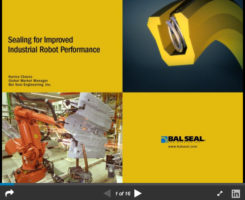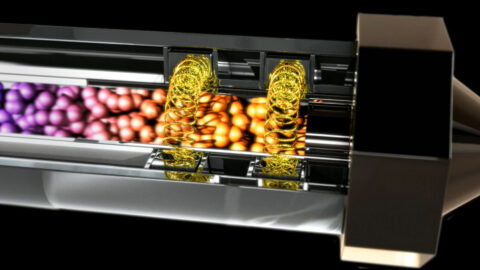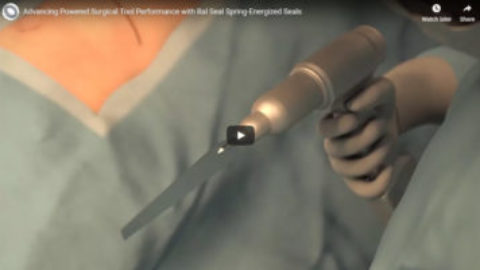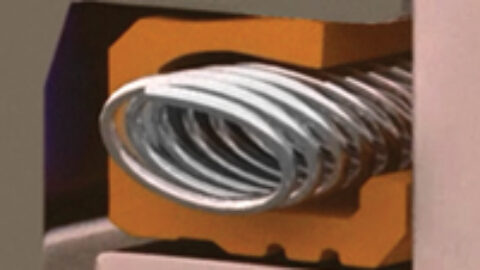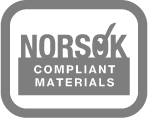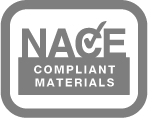To maximize industrial robot performance – and the performance of subsystems like robotic motors, actuators, and end effectors – it’s essential to use a seal that guards against leakage and ingress while promoting consistent, accurate movement.
In this presentation, we examine the relationship between seal choice and robot performance, and address important robotic sealing design criteria, such as material selection, seal lip geometry, and energizer force. We review brief case studies on sealing in a robotic motor, an actuator, an arm joint, and an end effector. We also suggest some ways to avoid common sealing mistakes that may be costing you time, money, and market share.
Here are some takeaways from the presentation:
Robotic Sealing Application Examples
Seals can be found in many areas of robot design. Here are some typical applications:
- Robotic motors
- Robotic actuators
- Robotic arms & end effectors
Critical Robotic Sealing Considerations
There are some fundamental but important things to consider when choosing a seal for your robotic design. They are:
- Friction (impacts power consumption and drives selection of components like robotics actuators or motors)
- Sealing effectiveness (ability to inhibit corrosion & ensure consistent performance over time)
- Durability
- Ease of installation
Of all these, friction is paramount. There are seven major factors that affect the frictional performance in robotic sealing. They are:
- Material choice – a low coefficient of friction and low “stiction” properties
- Energizer force – customized spring load to minimize friction but maintain sealing performance
- Seal geometry – minimize dynamic lip contact area without compromising sealing effectiveness
- Hardware – smooth surface finish, material hardness of 30Rc min.
- Media
- Pressure & speed
- Temperature (thermal cycling)
Our Bal Seal® spring-energized seal combines low-friction materials, a canted coil spring energizer, and innovative jacket profiles to help designers of food and beverage handling, pharmaceutical, automotive assembly, and other types of industrial robots achieve the ideal balance of friction and sealing effectiveness.
Consult with a Bal Seal Sealing Expert
To reduce delays and improve speed to market, think about robotic sealing in the early stages of your overall design process. Then, consult with Bal Seal Engineering to custom design a seal that will satisfy all of your application requirements.
